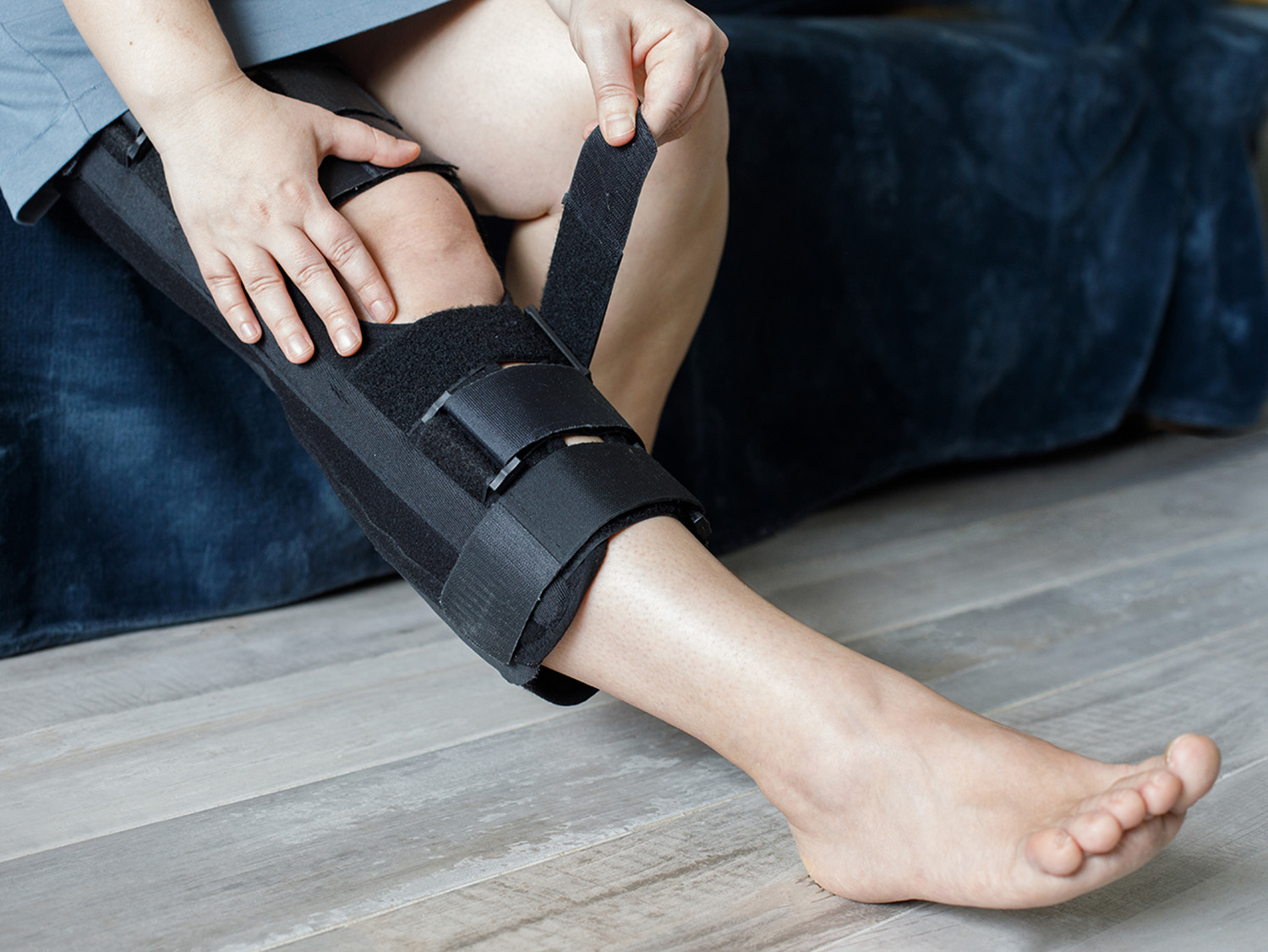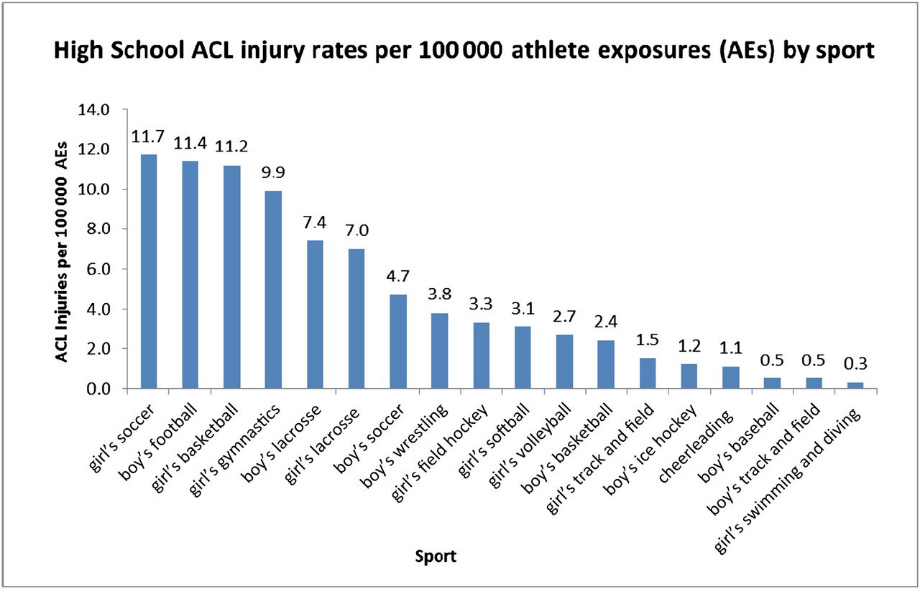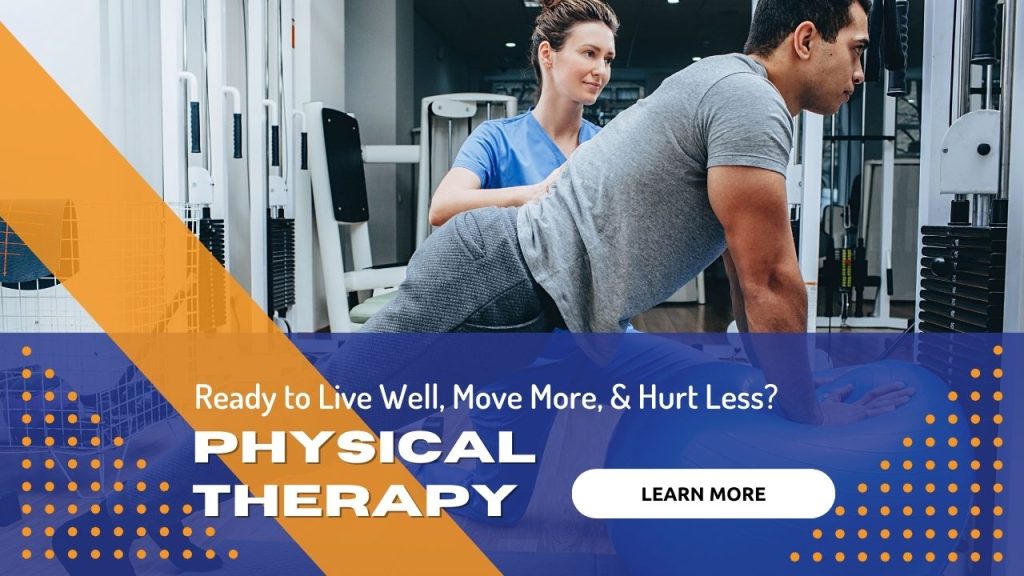ACL Injury
What is the ACL?
The knee is a major hinge joint in the lower extremity. It flexes and extends to allow us to walk,run and move throughout our daily activities. The knee has a very poor muscular support for lateral and rotational movements (It gets most of its muscular support in these planes from the hip muscles). The knee has a good system of ligaments that make up for the lack of muscle support. Those ligaments are on all sides of the knee and are as follows:
Medial Collateral Ligament (MCL): On the inside of the knee
Lateral Collateral Ligament (LCL): On the outside of the knee
Posterior Collateral Ligament (PCL): On the back of the knee
*Anterior Collateral Ligament (ACL): On the front of the knee

The ACL protects the leg from anterior tibial (the lower leg bone moving on the upper leg bone) translation, tibial internal rotation (the lower leg bone rotating inward relative to the upper leg bone) and valgus motions (think a knock-kneed position). Basically, the ACL provides stability to the knee during cutting, jumping and single-leg landings.
ACL tear prevalence
ACL tears occur when an athlete puts the leg in a position that compromises the ligament (see photo below). These usually are non-contact (75% of the time), and usually occurs during cutting or landing from a jump.
ACL tears occur far more often in females than males (6-8x more often) in the same sports. Sometimes, the athlete will also tear the other ligaments in the knee or their meniscus. The ACL is by far the most torn ligament in the knee and there are estimates that there are close to 200,000 ACL ruptures per year in the USA alone.
What does an ACL tear feel like?
Usually, the athlete will report a popping sensation in the knee, while cutting, jumping, or decelerating. The knee will feel unstable and will likely swell immediately. Walking is possible with an ACL tear, but any type of quick motion or sidestep motion will be painful. As time from initial injury progresses, there may be loss of range of motion (Meaning the knee may not straighten or bend as far). Muscle weakness in the quadriceps and hamstrings may also be noted due to the knee trying to protect itself from further injury.
I think I may have torn my ACL…
Initially, any type of knee injury with swelling should be treated with ice. Your first goal needs to be to get the swelling down and under control. If the knee feels unstable or significantly painful then you should contact your doctor or physical therapist. A suspected ACL tear can be assessed on the field or in the clinic with special tests, but an MRI will be needed to accurately diagnose the injury. If you did tear your ACL, then your MD will likely suggest physical therapy prior to your surgery to begin restoring your range of motion and quadriceps strength. Usually, pre-surgery strength and range of motion are good indicators that you are going to have a good and efficient rehabilitation post-surgery. Your MD will work closely with you to prepare you for surgery.
Physical Therapy is here to help for your ACL Injury
ACL surgery and its rehabilitation are a long and involved process that needs a good team to ensure success. Overall, the rehabilitation is about 20 weeks to get back to running and beginning cutting drills. However, you should expect to miss a full year of sport (If not two years). Often, patients are itching to get back on the field quickly. However, our job as physical therapists is to restore your knee range of motion and strength safely and responsibly. Part of that responsibility means that we progress your rehab in an individualized manner that will keep you safe 5 to 10 years after your surgery.





